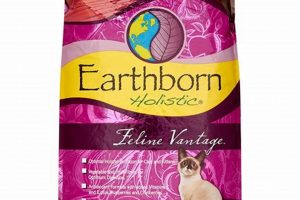The selection of sustenance consumed during a round of golf is pivotal. This choice directly influences a player’s energy levels, focus, and overall performance throughout the game. For example, opting for nutrient-rich snacks over sugary treats can provide sustained energy, mitigating the mid-round fatigue often experienced.
Strategic in-game nutrition provides significant advantages. Maintaining stable blood sugar levels enhances concentration and decision-making. Furthermore, proper hydration and electrolyte replenishment combat dehydration and muscle cramps, contributing to consistent performance. Historically, golfers often relied on readily available, less-than-ideal options; however, contemporary understanding emphasizes the advantages of thoughtfully planned on-course dietary choices.
The following sections will detail specific food categories and provide examples of optimal choices for consumption while participating in the sport of golf, with an emphasis on their respective nutritional benefits and practical considerations for on-course consumption.
Optimizing Golf Performance Through Strategic Nutrition
The subsequent recommendations are designed to enhance athletic performance during a round of golf through informed dietary choices.
Tip 1: Prioritize Complex Carbohydrates: Opt for whole-grain snacks such as trail mix with nuts and seeds, or a whole-wheat wrap with lean protein. These provide a slow-release energy source, preventing rapid blood sugar fluctuations.
Tip 2: Incorporate Lean Protein: Include sources such as hard-boiled eggs, turkey jerky, or a handful of almonds. Protein aids in satiety, promoting sustained energy and muscle recovery.
Tip 3: Emphasize Hydration: Consume water consistently throughout the round. Electrolyte-enhanced beverages may be beneficial, especially in hot weather, to replace lost minerals.
Tip 4: Moderate Sugar Intake: Limit consumption of sugary snacks and drinks. While a quick sugar boost may provide temporary energy, it is typically followed by a rapid decline, impairing focus and performance.
Tip 5: Choose Portable and Convenient Options: Select food items that are easily transportable and require minimal preparation. Energy bars, fruit slices, and pre-packaged nut mixes are practical choices.
Tip 6: Plan Ahead: Prepare and pack snacks and beverages in advance to avoid reliance on less nutritious options available at the course.
Tip 7: Consider Environmental Conditions: Adjust food and fluid intake based on the weather. In hotter climates, increase fluid and electrolyte consumption to prevent dehydration.
By adhering to these nutritional guidelines, golfers can optimize their energy levels, focus, and physical endurance, leading to improved performance on the course.
The following sections will provide more detailed information about specific food choices and their impact on golfing performance.
1. Sustained Energy Release
Sustained energy release is a critical component of optimal nutrition during a round of golf. The prolonged nature of the activity, typically spanning several hours, necessitates a consistent and gradual provision of energy to maintain physical and mental performance. This contrasts with the rapid spike and subsequent crash associated with simple sugars, which can negatively impact focus and endurance on the course.
The importance of sustained energy release stems from the demands placed on the golfer’s body and mind. Muscle function during swings, walking between holes, and maintaining concentration throughout the round all require a steady supply of glucose. Foods that promote sustained energy release, such as whole grains, nuts, and lean proteins, are digested and absorbed more slowly, preventing drastic fluctuations in blood sugar levels. For example, a handful of almonds, providing both complex carbohydrates and healthy fats, offers a longer-lasting source of energy compared to a candy bar.
In conclusion, the strategic selection of foods that facilitate sustained energy release is essential for maximizing performance during a round of golf. By prioritizing nutrient-rich options that promote stable blood sugar levels, golfers can enhance their focus, endurance, and overall playing experience. This approach mitigates the negative effects of energy crashes and ensures a consistent level of performance throughout the duration of the game. This knowledge has practical significance, enabling golfers to proactively manage their energy levels and optimize their nutritional choices for improved results.
2. Electrolyte Replenishment
Electrolyte replenishment is a crucial aspect of optimal nutrition during golfing activities, directly impacting performance, endurance, and overall well-being. Maintaining adequate electrolyte levels is paramount to counteracting the effects of perspiration and physical exertion inherent in the sport.
- Sodium’s Role in Hydration
Sodium, a primary electrolyte lost through sweat, plays a vital role in fluid balance. Insufficient sodium levels can lead to hyponatremia, characterized by muscle cramps, fatigue, and impaired cognitive function. Sports drinks, salty snacks, or electrolyte tablets can help replenish sodium during a round. Incorporating these into on-course dietary choices mitigates the risk of dehydration and performance decline.
- Potassium and Muscle Function
Potassium is essential for muscle contraction and nerve function. Deficiencies can manifest as muscle weakness and fatigue. Foods like bananas, avocados, and coconut water are potassium-rich options that can be consumed during a round. Maintaining adequate potassium levels supports sustained muscle performance and reduces the likelihood of cramps.
- Magnesium and Energy Metabolism
Magnesium is involved in energy production and muscle relaxation. Loss of magnesium through sweat can contribute to fatigue and muscle soreness. Nuts, seeds, and dark leafy greens provide magnesium. Consuming these food sources aids in energy metabolism and promotes muscle recovery.
- Chloride and Fluid Regulation
Chloride works in conjunction with sodium to regulate fluid balance. Adequate chloride intake is necessary to maintain proper hydration. Many sports drinks and salty snacks contain chloride. Ensuring sufficient chloride levels helps prevent dehydration and supports optimal physical function during golf.
Integrating strategies for electrolyte replenishment into on-course nutritional planning is indispensable for golfers seeking to optimize performance and mitigate the negative effects of dehydration and electrolyte imbalances. Thoughtful selection of foods and beverages rich in essential electrolytes is a key component of a comprehensive approach to nutrition in the sport of golf.
3. Portable Convenience
The attribute of portable convenience is a critical factor when considering the optimal selection of provisions for consumption during a round of golf. The inherently mobile nature of the activity necessitates food items that can be easily transported, stored, and consumed without disrupting the flow of the game.
- Packaging Integrity
The packaging of food items intended for on-course consumption must maintain structural integrity under various environmental conditions. Considerations include resistance to crushing, tearing, and temperature fluctuations. Examples include individually wrapped energy bars, resealable bags of trail mix, or pre-cut fruit stored in durable containers. Failure to maintain packaging integrity can lead to spillage, contamination, and inconvenience, negatively impacting the golfing experience.
- Ease of Consumption
Food items should be readily consumable with minimal preparation or equipment. Examples include pre-packaged nuts, dried fruit, or protein bites that require no utensils or complex opening procedures. Avoidance of items requiring extensive preparation or that are prone to messiness is paramount to maintaining focus and pace of play. Items should be easy to manage with one hand, enabling the golfer to simultaneously navigate the course and consume sustenance.
- Temperature Stability
Certain foods are susceptible to degradation under elevated temperatures. Chocolate-based products or items requiring refrigeration may melt or spoil, rendering them unsuitable for on-course consumption. Selection of items that exhibit inherent temperature stability, such as dried meats, granola bars, or whole fruits with protective skins, mitigates the risk of spoilage and maintains palatability.
- Minimal Waste Generation
Food choices should minimize the generation of excessive waste. Opting for items with minimal packaging or reusable containers reduces the environmental impact and simplifies waste disposal on the course. Examples include reusable water bottles, biodegradable snack bags, or food items consumed directly without producing significant wrappers or remnants. Adherence to responsible waste management practices contributes to the preservation of the golfing environment.
The convergence of these facets packaging integrity, ease of consumption, temperature stability, and minimal waste generation underscores the importance of portable convenience in the selection of provisions for a round of golf. Prioritizing items that embody these characteristics optimizes the golfer’s experience, minimizes disruptions, and promotes responsible environmental stewardship.
4. Optimal Hydration
Optimal hydration constitutes an integral component of effective nutritional strategies during a round of golf. The correlation between hydration status and performance is significant, with dehydration demonstrably impairing cognitive function, muscle endurance, and overall athletic capability. Therefore, selecting foods that contribute to, or at least do not detract from, maintaining adequate hydration levels is paramount. For example, choosing water-rich fruits such as watermelon or oranges over dense, dry snacks not only provides essential nutrients but also contributes to fluid intake, mitigating dehydration risks associated with prolonged physical activity in varying environmental conditions. The consumption of these food items influences the body’s fluid balance and, consequently, impacts golfing performance.
Foods high in sodium can stimulate thirst and encourage greater fluid consumption, indirectly promoting hydration. However, the balance of electrolytes, particularly sodium and potassium, is crucial; excessive sodium intake without adequate fluid can exacerbate dehydration. Conversely, certain foods, such as those high in fiber, require more water for digestion and could potentially contribute to dehydration if not accompanied by sufficient fluid intake. A practical application of this understanding involves pairing high-fiber snacks, like whole-grain crackers, with hydrating beverages, such as water or electrolyte-enhanced drinks. This combination optimizes digestive processes while simultaneously maintaining hydration levels. Furthermore, monitoring urine color as an indicator of hydration status provides real-time feedback, enabling golfers to adjust their fluid and food intake accordingly.
In summation, optimal hydration is inextricably linked to prudent food choices during a round of golf. While specific foods can contribute to hydration efforts, the overarching strategy must prioritize consistent fluid intake in conjunction with food selections that support, rather than undermine, the body’s fluid balance. Challenges in implementation include individual variations in sweat rates and environmental conditions that necessitate customized hydration plans. Understanding the relationship between hydration and food choices enables golfers to proactively manage their fluid levels, enhance their performance, and mitigate the risks associated with dehydration. The impact on performance and well-being is directly enhanced by the implementation of these dietary choices.
5. Muscle Support
Muscle support, achieved through appropriate dietary choices during a round of golf, is critical for maintaining physical endurance, preventing fatigue-related injuries, and facilitating recovery. The sustained physical activity inherent in the sport necessitates nutritional strategies that optimize muscle function and repair.
- Protein Intake for Muscle Repair and Growth
Protein consumption provides essential amino acids necessary for repairing muscle tissue damaged during physical exertion. Lean protein sources, such as turkey jerky, hard-boiled eggs, or a handful of nuts, consumed throughout the round, can aid in reducing muscle soreness and promoting recovery. Insufficient protein intake can lead to increased muscle fatigue and prolonged recovery times, negatively impacting subsequent performance.
- Branched-Chain Amino Acids (BCAAs) and Fatigue Reduction
Branched-chain amino acids (BCAAs), including leucine, isoleucine, and valine, play a significant role in reducing muscle fatigue and promoting muscle protein synthesis. BCAA-rich foods or supplements, such as whey protein or BCAA-fortified beverages, can be beneficial during prolonged physical activity. These amino acids help to mitigate muscle breakdown and maintain energy levels, contributing to sustained performance throughout the round.
- Carbohydrates for Energy and Glycogen Replenishment
Adequate carbohydrate intake is essential for replenishing glycogen stores, the primary fuel source for muscles during exercise. Complex carbohydrates, such as whole-grain snacks or fruits, provide sustained energy and prevent muscle glycogen depletion. Insufficient carbohydrate intake can result in premature muscle fatigue and reduced power output, impairing swing mechanics and overall performance. Proper replenishment of glycogen stores is crucial for maintaining muscle function and preventing fatigue-related injuries.
- Electrolytes for Muscle Function and Cramp Prevention
Electrolytes, including sodium, potassium, and magnesium, are vital for maintaining proper muscle function and preventing muscle cramps. Electrolyte imbalances, often resulting from perspiration, can lead to muscle weakness and cramping. Electrolyte-enhanced beverages or salty snacks can help to replenish lost electrolytes and maintain optimal muscle function. Ensuring adequate electrolyte intake is critical for preventing muscle cramps and sustaining physical endurance during a round of golf.
Integrating these facets of muscle support into on-course nutritional planning is essential for golfers aiming to optimize performance and minimize the risk of fatigue-related injuries. Thoughtful selection of foods rich in protein, BCAAs, carbohydrates, and electrolytes can contribute to sustained muscle function, reduced fatigue, and enhanced recovery, ultimately leading to improved golfing outcomes. Proper nutrient timing, including pre-, during, and post-round consumption, further optimizes the benefits of muscle support.
Frequently Asked Questions
The following questions address common concerns and misconceptions regarding optimal nutrition during a round of golf. The answers provide informative guidance based on scientific principles and practical considerations.
Question 1: What constitutes the primary benefit of strategic food selection while golfing?
The primary benefit lies in the sustained provision of energy and essential nutrients, mitigating fatigue and promoting consistent focus throughout the round. It enables the maintenance of optimal physical and cognitive performance over an extended period.
Question 2: Is it necessary to consume specialized sports nutrition products, or can readily available foods suffice?
Readily available foods, thoughtfully selected, can effectively meet nutritional needs. Emphasis should be placed on whole, unprocessed options that provide complex carbohydrates, lean protein, and healthy fats. Specialized products may offer convenience but are not inherently superior.
Question 3: How does hydration status influence golfing performance?
Dehydration impairs cognitive function, reduces muscle endurance, and increases the risk of cramping. Maintaining adequate hydration is crucial for optimal performance and can be achieved through consistent water intake and the consumption of water-rich foods.
Question 4: What are the potential consequences of consuming sugary snacks or beverages during a round?
While sugary items may provide a temporary energy boost, they are typically followed by a rapid decline in blood sugar levels, leading to fatigue, impaired focus, and decreased performance. Reliance on sugary items should be minimized.
Question 5: How can golfers effectively manage food spoilage in warm weather conditions?
Selecting temperature-stable foods, such as dried fruits, nuts, or energy bars, minimizes the risk of spoilage. Employing insulated containers or cooling packs can further prolong the freshness of perishable items.
Question 6: Should food choices vary based on the length or intensity of the round?
Yes. Longer or more physically demanding rounds necessitate a greater emphasis on sustained energy sources and electrolyte replenishment. Adjustments to portion sizes and food types should be made accordingly.
Strategic food selection during a round of golf is not merely a matter of convenience but a deliberate effort to optimize physical and cognitive performance. Thoughtful planning and informed choices are essential for maximizing enjoyment and success on the course.
The next section will delve into common dietary errors that golfers often make, offering actionable strategies for avoidance.
Conclusion
This exploration has demonstrated that strategic nutritional planning is an indispensable element of golfing proficiency. Optimal performance necessitates a deliberate selection of readily portable, temperature-stable sustenance that promotes sustained energy release, electrolyte replenishment, hydration, and muscle support. The consistent application of these principles mitigates fatigue, enhances focus, and promotes physical endurance throughout the duration of play.
The presented information underscores that the thoughtful integration of dietary strategies directly influences golfing outcomes. Prioritizing informed choices and proactive planning represents a commitment to maximizing athletic potential. Continued adherence to these guidelines is expected to yield demonstrable improvements in performance and an enhanced overall golfing experience.







